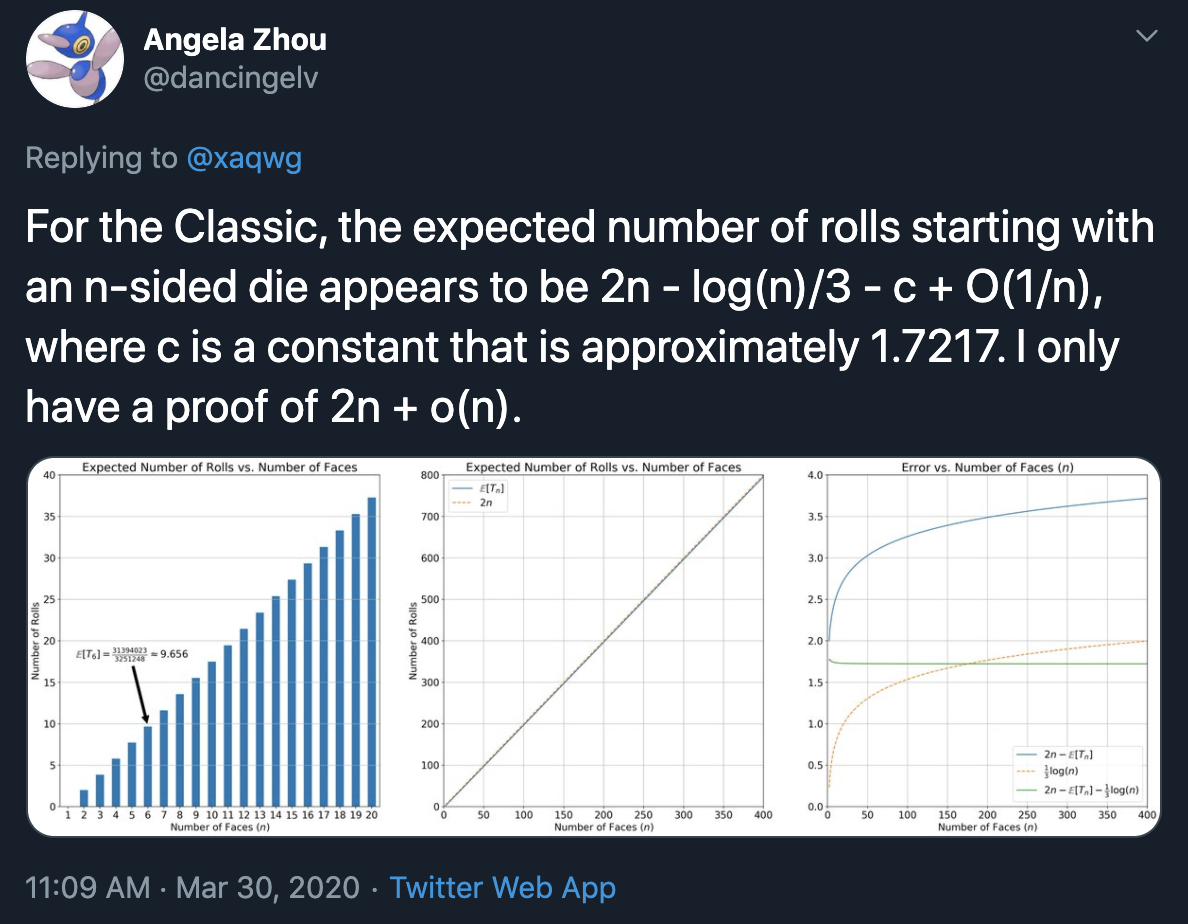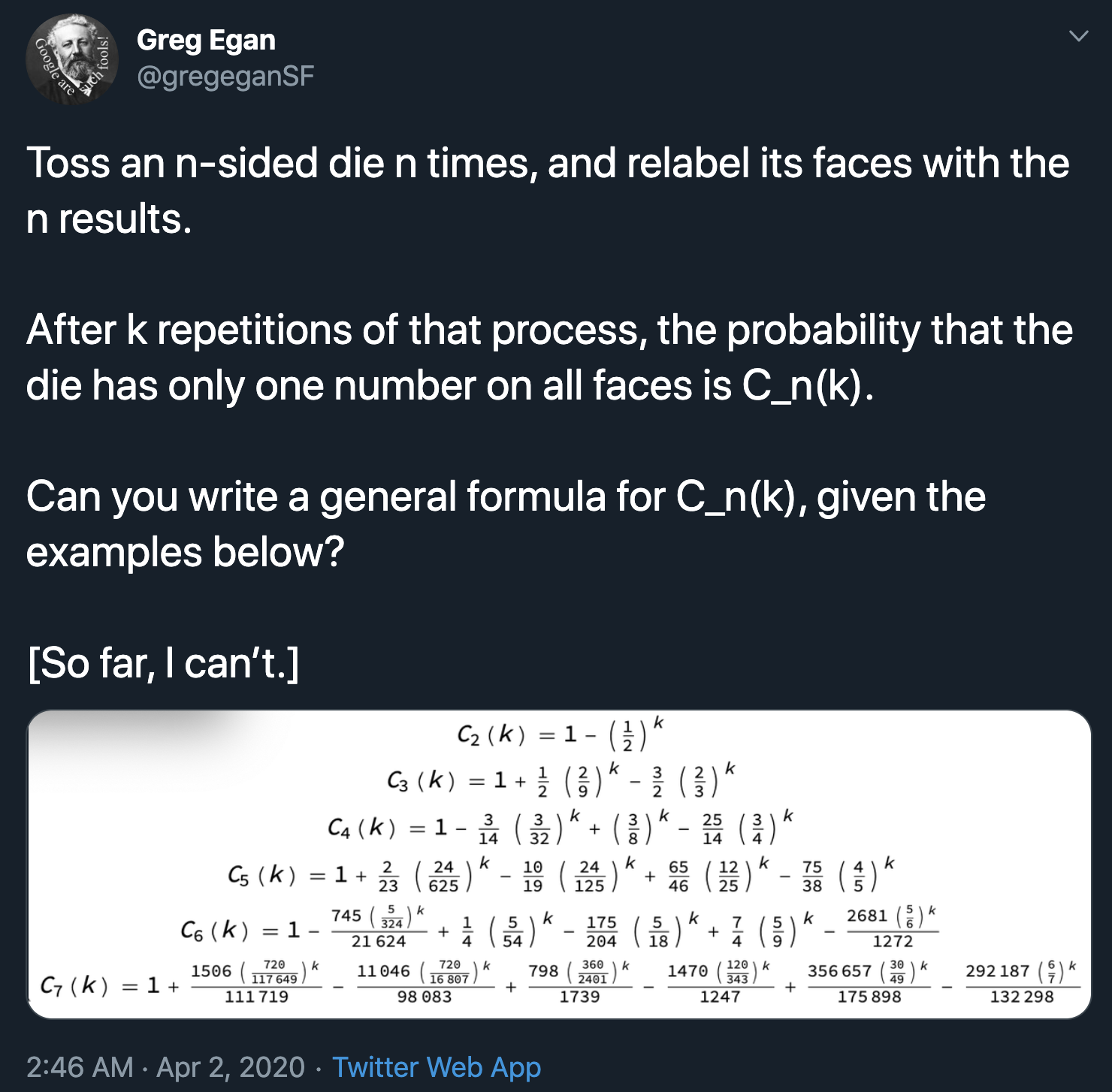In spite of its "recreational" aspect, this question appears to me to be research-level and (I hope) clearly formulated and tagged.
Edit 4/4/20: You can find a related question with the same motivator as posed by Greg Egan:
Background:
Here is a relatively straightforward question from a recent 538 Riddler:
Last week, you started with a fair 6-sided die and rolled it six times, recording the results of each roll. You then wrote these numbers on the six faces of another, unlabeled fair die. For example, if your six rolls had been 3, 5, 3, 6, 1 and 2, then your second die wouldn’t have had a 4 on it; instead, it would have two 3s.
Next, you rolled this second die six times. You took those six numbers and wrote them on the faces of yet another fair die, and you continued this process of generating a new die from the previous one.
Eventually, you’d have a die with the same number on all six faces. What was the average number of rolls it would take to reach this state?
The link above contains an exact solution, but there is also a follow-up with some work done, yet which lacks a closed form solution.
My Question:
What is the precise answer for the version of this question in which you start with a fair $N$-sided die?
The 538 piece above includes a link to work from Angela Zhou, who also tweets:


